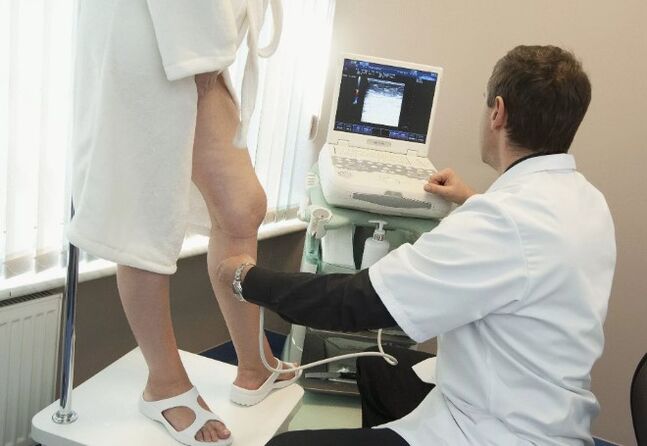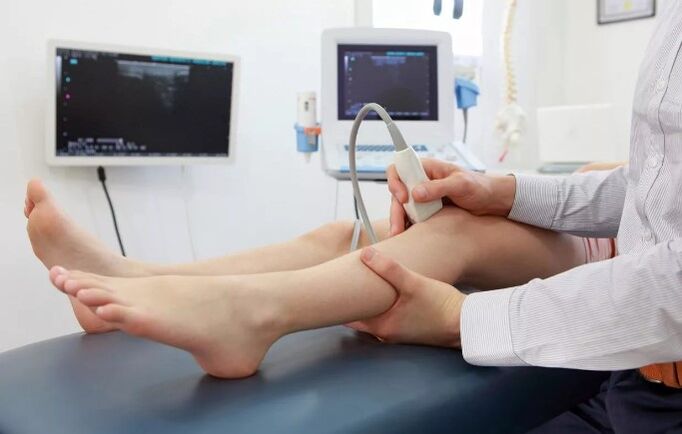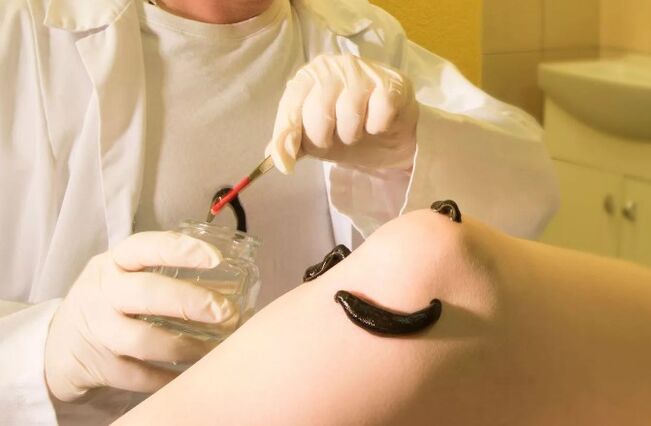Vascular diseases are a fairly common occurrence that can happen to everyone. Like many other diseases, varicose veins have their phases, and if the initial manifestations of pathology is more often accompanied by discomfort, the last phase is dangerous not only for health, but also for human life. To avoid the beginning of such serious consequences as, for example, disability and others, it is necessary to know the main characteristics of varicose vein event, its development and ways to prevent its complications.

Varicose vein concept
Varicose veins are a disease that affects the layer of muscles and connective tissue of the vacular wall, as well as their valve apparatus. As a result, veins are expanded, blood circulation in this place, the reverse blood of the blood through the vessels.
Most people know about varicose veins on their feet. But there are other disease localizations, because they can be affected by any part of the body.
Most often, in medical practice, varicose veins of the pelvis (bladder, uterus), perineum (scrotum, rectum, vagina) are diagnosed. However, in any case, the clinical picture of the disease depends on the place of damage and phase of pathology.
Varicose veins in men and its characteristics
At a young age (on average, in 10-12 years), a young man can come across a disease like varicose veins of the sweetheart scrotum.The scientific state is called "Varicocele". It can be found during a simple examination and the palpation of the scrotum. Clinical Varicocele is manifested by a series of symptoms that include:
- Side pain or in half affected scrotum is intensified after physical activity;
- seriousness in the testis;
- infertility.
However, often varicots cannot be shown at all and be identified by accident during the planned interrogation.
This disease distinguishes three phases:
- Slight spread of veins, which can be seen when the patient is performed by the Valsalve sample (strain);
- The veins are visible and palpated in a quiet state of the patient;
- The vessels were sharply changed, convincing, filled with blood. The testicle in the area affected by the disease was reduced in size, has a test consistency.
In adult patients, varicose veins of the scrotum are often diagnosed when treating doctors with complaints inability to child. There is a theory according to which Varicocele affects fertility (ability to reproduce the offspring) by increasing temperature within the scrotum, which negatively affects testing and spermatogenesis. Moreover, this type of varicose veins in men is often combined with the damage to the vessel on their feet.

The diagnosis of the disease is simple.As mentioned earlier, you can doubt varicose veins of the scrotum to a normal view, and then an ultrasound study of the vascular bundle for confirmation should be made. As a way of treatment, only surgical intervention is used: the doctor is simply looking for varicose veins, blood circulation is performed in accordance with the anastomists. However, it should be borne in mind that as with varicose veins, the operation does not guarantee complete healing. Moreover, the disease in many cases is repetitive.
Features of varicose veins in women
Pelvic varicose veins.For women, this disease is the risk of a fetal agreement. As mentioned above, varicose veins can occur on any part of the body, including in the field of pelvis. During pregnancy, the situation worsens, from the first, the abdominal cavity vessel stretched until the fetus grows, and the other, the uterus increases the size of them. Due to these processes, the circulation of the blood placenta is disturbed, which can lead to rejection. In this case, of course, the probability of losing a child is significantly increasing.
Sometimes debut varicose veins during pregnancy.Before the concept, a woman could not doubt he had a tendency. However, during the process of submitting the fruit, the female body is subjected to certain changes in the body that can cause some diseases, including varicose veins. Such changes include:
- Change of hormonal background;
- Increasing body weight;
- Anatomical changes.
Moreover, the number of births is directly proportional to the risk of the earnings of subsequent pathology. In addition to pelvic varicose veins, other complications may occur during pregnancy:
- Rupture of the wombware during childbirth;
- thrombophlebitis;
- Dermatitis, trophic sores;
- A venous disadvantage.
Therefore, pregnancy is a factor, unfortunately, can cause varicose veins, because it contributes to the faster development of pathology and requires preventive measures with a certain diagnosis.
Other consequences of varicose veins
Thrombophlebitis.Often varicose veins and venous lack of water to inflammation of the walls of blood vessels - Flebitis, which can be combined with the formation of blood clots - thromboflebitis. Basically, this disease affects the vessels of the lower extremities, as a result of which patients complain about heavy pain in the affected areas of the legs. Symptoms of general inflammatory reaction are noted: High temperature, weakness. If the treatment does not start on time, the process refers to other veins, the patient's condition worsens.

Thromboembolism.In the presence of thrombophlebitis and varicose veins there is a risk of serious complication - thromboembolism. It occurs due to the separation of blood clots from the wall of the vessel, followed by the blockade of the most important troops that nurture the heart, light and brain.
Initially, there is a blood clot in your leg (this is most often). However, from the lower limb, it is forced to move through blood flow to different parts of the body. As a result, they fall into smaller branches of the vascular system, blood clots causes collapse, as a result whose blood circulation is disturbed by the appearance of ischemia, and then necrosis. Clinically, it manifests heart attack, brain or pulmonary and fats (pulmonary artery thrombolism), which often ends death.
The treatment of patients made of such diagnosis should be carried out only in intensive care and intensive care. Measures to assist the patient in this case should be taken immediately - only in this case the patient has a chance for salvation.
Dermatitis.Most often, this unpleasant complication is created on the inside surface of the lower leg, manifests as numerous symptoms, which include:
- skin thinning;
- epidermal pigmentation;
- Itching of the affected area;
- The appearance of bubbles that usually open ", leading to skin stratification;
- Violation of the sensitivity of the affected area.
Dermatsitis is not treated well, it can hardly be treated. The presence of thrombus implies the appearance of trophic rectors - parts of the skin of the skin. In the future, the infection can join Ulcers from which gnowhow wounds can appear.
Telegioetalia.This cosmetic mana, which looks like a vascular "star", is a consequence of bursting small surface capillaries and the initial phase of varicose veins.
Hemorrhoids.This is a very common disease - nothing more than varicose veins of the rectum. It is manifested by the emergence of so-calmed hemorrhoid nodes, which are often able to betray, fall and become inflamed. This causes significant care to patients.
Diagnostic methods

The easiest and most favorable way to detect varicose veins and its complications are ultrasound dopper of the lower extremities. In the process of this study, blood flow, blood vessels and the state of their walls as a whole are estimated. Thus, the above diagnosis helps detect blood clots. Moreover, all patients with varicose veins must transmit Doppler before any surgical intervention in order to exclude the presence of blood clots to avoid complications.
In cases where the patient is overzaled for a venous disadvantage or thrombosis, doctors recommend that it is an X-ray flejbography (a method for venture assessment).
To do this, a separate serum is introduced in the vessel, after which X -Ray is taken, which will register the impulses coming from the veins. Then the result is estimated.
You can complete the test with the calculated tomography with the contrast of military logs. This method is the most accurate but more expensive. However, this method of diagnosis allows not only to identify vascular diseases, but also to assess the condition of other bodies and tissues.
Treatment of complications
Therapy for the consequences of varicose veins depends on the current state of the patient and, directly, the type of complications. Thus, thromboflebitis requires the prescribing of blood aging, anti-inflammatory drugs, antibiotics, hospital. As the inflammatory process is merged, physiotherapy, hyrudothership (leeches) are recommended. The operation can be proposed as Ethiotropic treatment - introduction and removal of veins.
Trophic ulcers are poorly treated.The surgeon removes areas of necrosis, prescribes overflows with antiseptic and fats. Together with these manipulations, antibacterial therapy and blood flow in Vienna is carried out.
Vascular stars eliminate sclerotherapy, ie thus - the corrupt "gluing" of the vein lumon. After the proceedings, the wearing of the compression bedding for relapse prevention is prescribed.
Other complications, such as hemorrhoids, varicokels and varicose veins, can only be surgically hardened after the fundamental examination and identify the affected vein.
Forecast

The unfavorable forecast was observed in the case of pulmonary artery thromboembolism, the number of deaths in which 75% reaches. Also, thrombophlebitis with trophic skin lesions have a characteristic without incouring, as with such disease, persistent changes in blood vessels appear, and the risk of infection is increasing, which leads to a certain complication. The consequences of the disease can often lead a patient on disability.
Indications for providing a patient for disability are:
- The presence of thrombosis and transferred thromboembolism;
- Repetitive erizipel;
- Posttrombophlebic syndrome;
- Inefficient surgical treatment.
The most common disability is given to patients with the last phase of varicose veins with permanent impaired performance.























